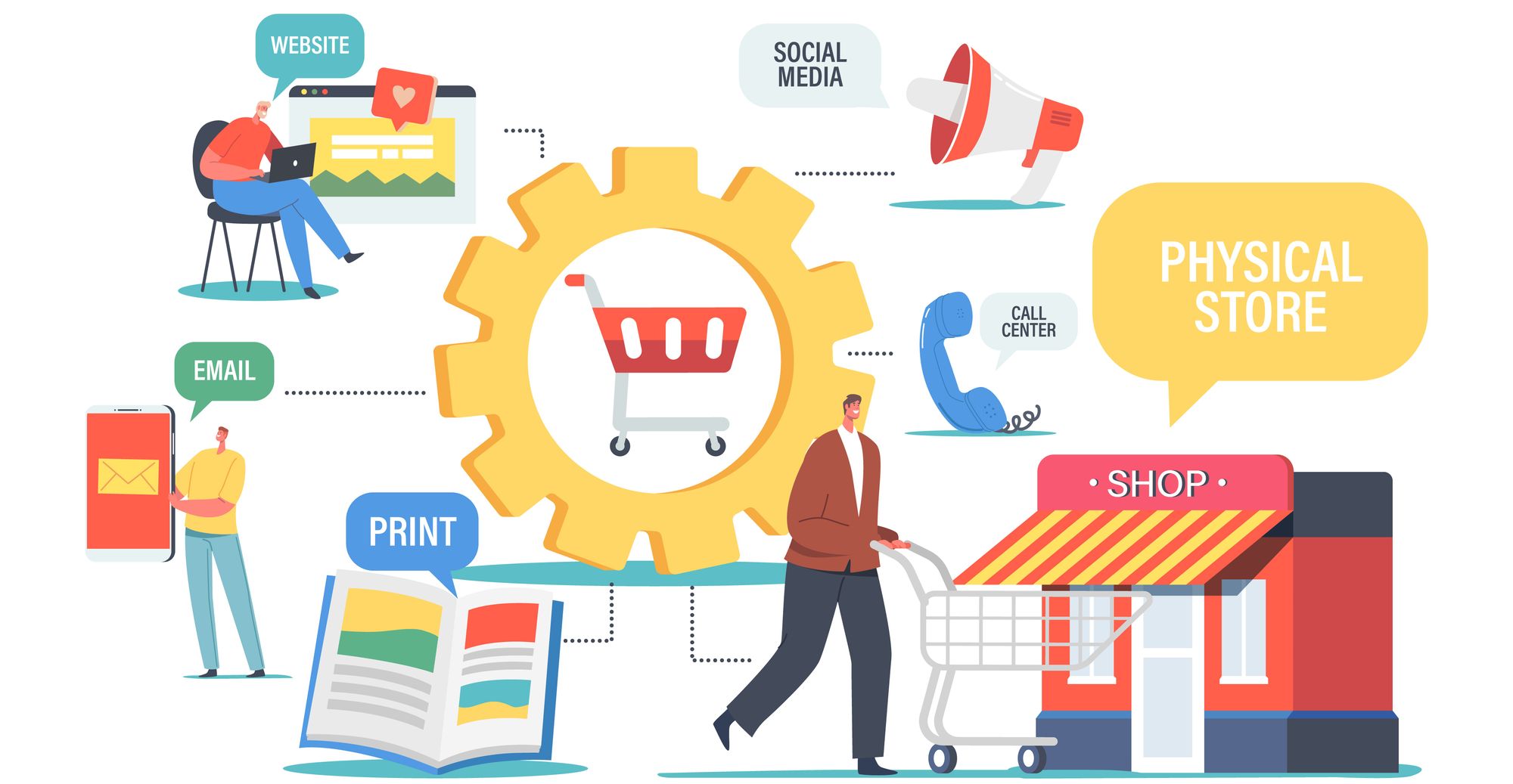
🎓 Definition
Omnichannel refers to a strategic approach that aims to provide a seamless and integrated shopping experience for customers across various channels and touchpoints. It involves integrating different sales channels, such as physical stores, e-commerce websites, mobile applications, social media platforms, and more, to create a cohesive and consistent customer journey.
An omnichannel Retailer focuses on breaking down silos between different channels and ensures that customers can interact and engage with the products seamlessly regardless of the channel they choose. The goal is to provide a unified and personalized experience, allowing customers to switch between channels while enjoying a consistent shopping experience and access to relevant information and products.
🧪 Example of Omnichannel
- Brick and Mortar (Physical store)
- Online Shopping
- Mobile App
- Social Media
❓What is used for
- Retailers strive to create a smooth shopping journey, connecting their physical stores, websites, and mobile apps. This ensures customers can effortlessly explore products and make purchases, no matter the channel they choose.
- By providing multiple channels, Retailers open up more opportunities for customers to buy their products, leading to higher sales and conversion rates. Customers can shop in the way that suits them best, whether online, in-store, or a combination.
- Omnichannel strategies empower Retailers to gather customer data and use it to personalize marketing messages, offer targeted promotions, and suggest relevant products. This tailored approach fosters customer engagement, satisfaction, and loyalty.
- Click-and-Collect (BOPIS) and Ship-from-Store: Retailers leverage omnichannel capabilities to provide convenient services like click-and-collect or ship-from-store. This gives customers the flexibility to choose how they receive their purchases, combining the convenience of online shopping with the immediacy of in-store pickup or fast delivery.
- Integrating inventory systems across channels enables Retailers to provide real-time product availability information. Customers can confidently make purchases, knowing that their desired items are in stock and accessible through their preferred channel.
- An omnichannel approach allows Retailers to offer consistent and seamless customer service across various touchpoints. Customers can seek assistance, resolve issues, or ask questions through online chat, phone support, or in-person interactions, ensuring a positive and supportive experience.
- Retailers can also project a modern and customer-centric image. Providing a seamless and integrated shopping experience across channels elevates the brand perception and sets the retailer apart from competitors.
How do Retailers integrate and manage customer data across different channels to ensure a personalized shopping experience?
Retailers typically use advanced Customer Relationship Management (CRM) systems and data analytics tools to integrate and manage customer data across various channels. These systems allow them to collect, analyze, and utilize customer information such as purchase history, preferences, and browsing behavior. By centralizing this data, Retailers can create a unified view of each customer, enabling them to deliver personalized marketing messages, targeted promotions, and product recommendations across all touchpoints.
What technologies or platforms are commonly used by Retailers to implement and support Omnichannel strategies?
Retailers often leverage a combination of technologies and platforms to implement and support Omnichannel strategies. This may include Enterprise Resource Planning (ERP) systems for inventory management, Point of Sale (POS) systems for in-store transactions, e-commerce platforms for online sales, and mobile app development frameworks for mobile commerce. Additionally, Application Programming Interfaces (APIs) and middleware solutions are used to facilitate seamless integration between different channels, ensuring real-time data synchronization and consistent customer experiences.
How do Retailers measure the success of their Omnichannel strategies, and what key performance indicators (KPIs) are used to evaluate customer engagement and satisfaction across different channels?
Retailers measure the success of their Omnichannel strategies through various key performance indicators (KPIs) such as customer satisfaction scores, Net Promoter Score (NPS), customer retention rates, and sales conversion rates across different channels. Additionally, they track metrics related to website traffic, mobile app usage, click-through rates, and average order value to evaluate customer engagement and behavior across multiple touchpoints. By continuously monitoring these KPIs, Retailers can assess the effectiveness of their Omnichannel initiatives and make data-driven decisions to optimize the customer experience and drive business growth.